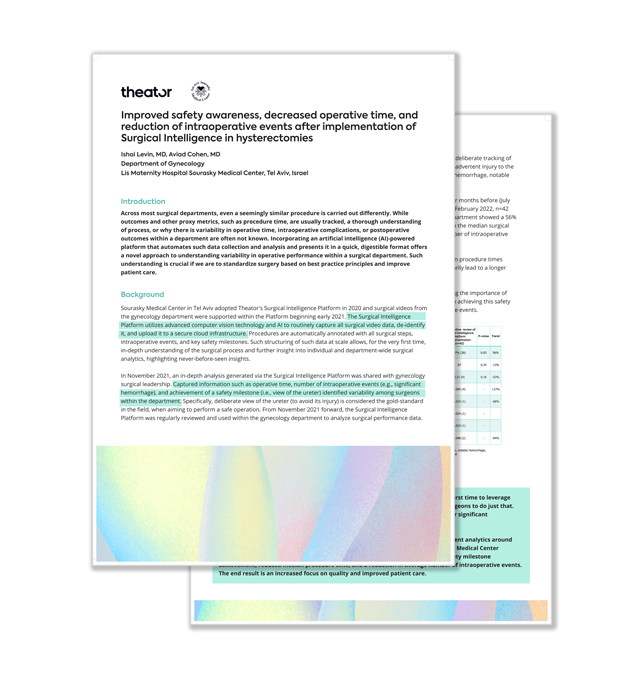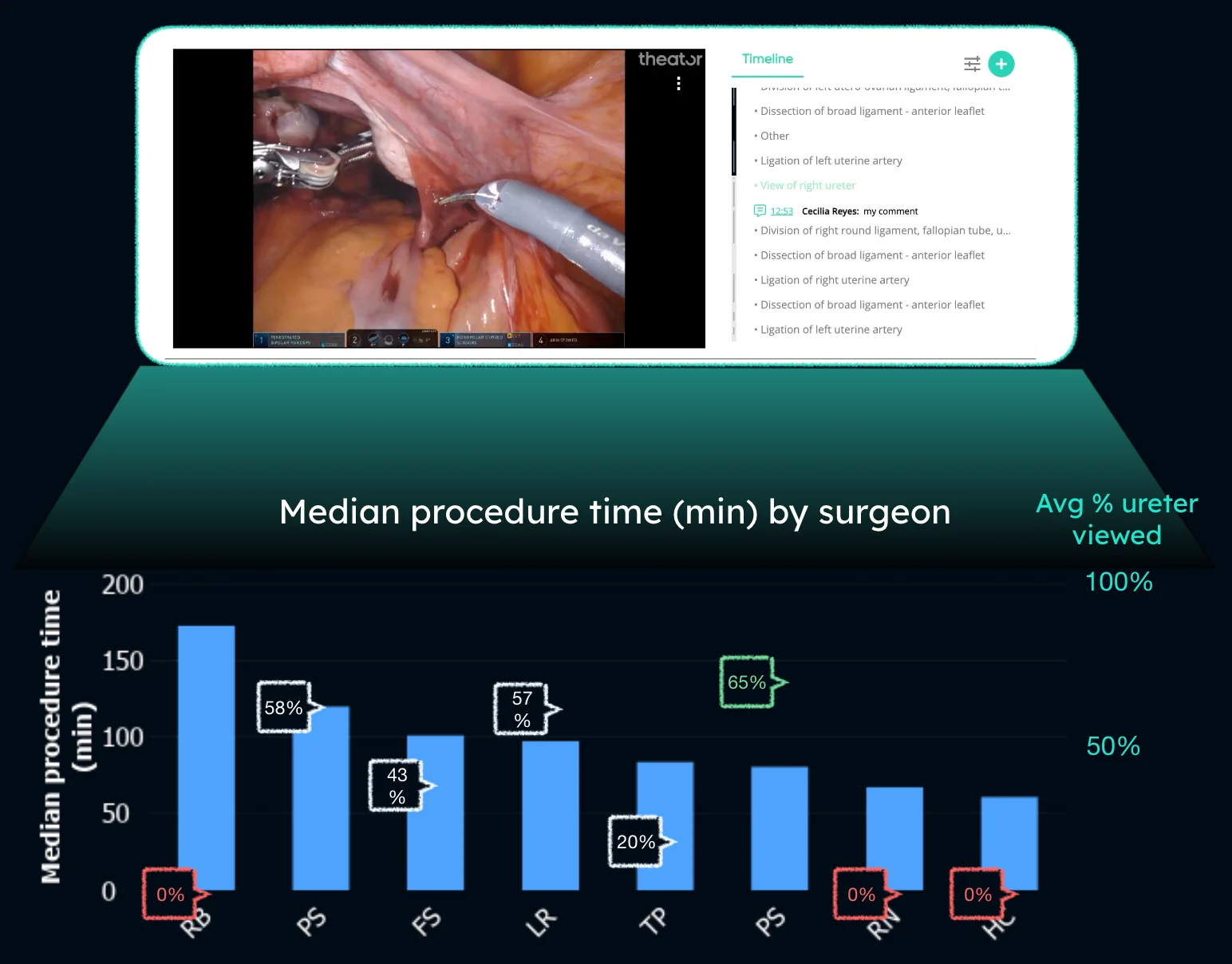Gynecology Department Tackles Surgical Variability
![]() Jordan
on
July 26, 2023
Jordan
on
July 26, 2023

CUSTOMER STORY
How a Gynecology Department Tackled Surgical Variability
Using Surgical Intelligence, one hospital drove significant improvement in only four months.
How one gynecology department fought surgical variability
After implementing Theator’s Surgical Intelligence Platform, one hospital’s gynecology department took action. They were shocked to see the variability that existed in their department.
After a few months of using the platform, the department had enough surgical video data to produce an in-depth analysis. The analysis contained insights on a surgeon and department level that were previously impossible to attain.
The analysis included insights on things like operative time, number of intraoperative events, and safety milestone achievements – but ultimately displayed a large variability in performance among surgeons across the department.

The Source of Variability
The analysis provided by our Surgical Intelligence Platform identified two major variabilities across the department. There was significant variation in gynecologic procedure times, and deliberate tracking of the ureter during laparoscopic hysterectomy procedures.
Armed with this new information, the department took action. Leadership implemented a gold standard surgical practice, deliberate view of the ureter, in order to avoid injury and reduce intraoperative events. Through Theator’s Surgical Intelligence Platform, adoption to this safety milestone was monitored over time.
Why does surgical variability matter?
Surgical variability is one of the biggest challenges faced by hospitals and patients today. Caused by numerous factors, from individual surgeon techniques to OR equipment, surgical variability leads to inconsistent outcomes.
There are many surgical analytics tools to help track outcomes or proxy metrics like procedure times. However, these tools fail to deliver a thorough understanding of things like process, or why variability exists across departments.
At Theator, we use computer vision and AI to help identify the root cause of surgical variabilities, which is the first step in standardizing surgery, optimizing outcomes, and reducing variability.
Want the printer-friendly version of this story?
Let us know and we will send it straight to your inbox!





